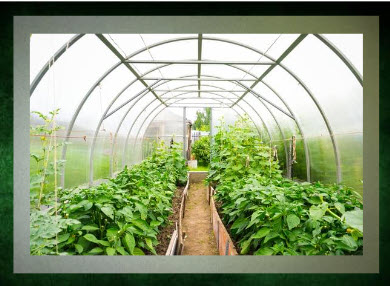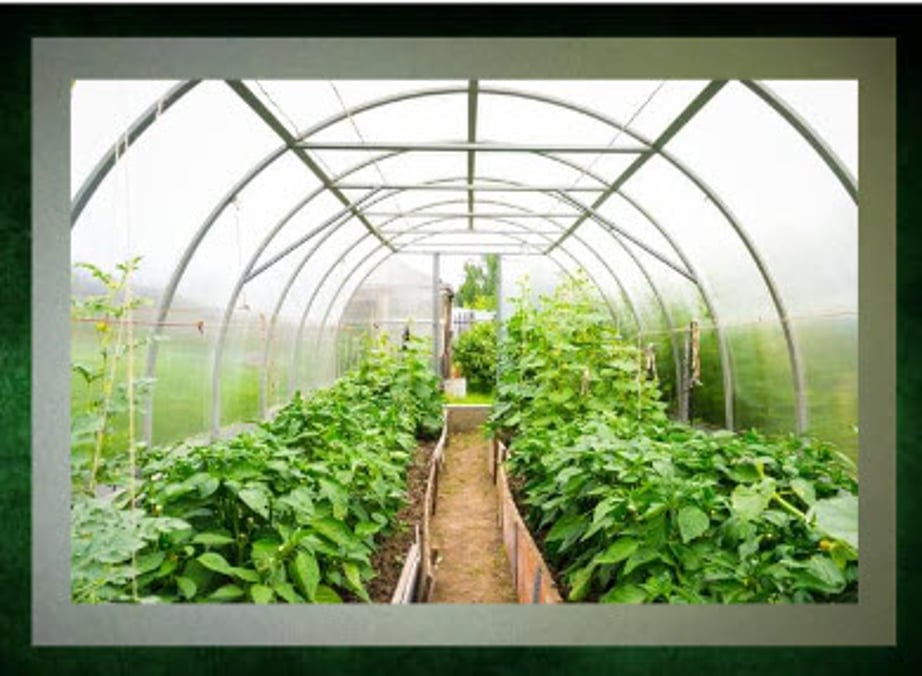
Your greenhouse is a haven for your plants, a carefully controlled environment where they can flourish. But just like a good house needs a strong roof, your greenhouse needs the right covering to protect your precious crop. Polyethylene plastic sheeting is the most popular choice for greenhouse covers, offering a balance of affordability, durability, and light transmission. But with so many varieties available, choosing the perfect type can feel overwhelming.
This guide will delve into the world of polyethylene greenhouse sheeting, exploring the different types, their properties, and how to select the best one for your needs. We'll also introduce SolaWrap, a unique option gaining traction in the greenhouse market.
The Wonderful World of Polyethylene:
Polyethylene, or poly for short, is a versatile plastic commonly used in various applications, from food packaging to plastic bags. In the greenhouse world, polyethylene sheeting comes in various thicknesses (measured in mils, with 1 mil equal to 1/1000 of an inch) and offers a range of features to suit different growing conditions. Here's a breakdown of the most common types:
-
Standard Clear Polyethylene: This is the workhorse of greenhouse sheeting. Available in thicknesses ranging from 4 mil to 10 mil, it offers good light transmission (around 90% for new film) and is relatively inexpensive. However, standard poly degrades under UV light, typically lasting 2-4 years before needing replacement. It is vulnerable to rips especially in bad weather.
-
UV-Treated Polyethylene: This is a clear poly film with UV inhibitors added during manufacturing. These inhibitors significantly extend the lifespan of the plastic, often lasting 4 years. They are a good choice for those who want a longer-lasting, reliable cover.
-
Reinforced Polyethylene: This type of poly incorporates a scrim, a mesh layer sandwiched between two poly films. The scrim reinforces the plastic, making it more tear and puncture resistant. This is ideal for areas prone to high winds, hail, or for larger greenhouses needing extra support.
-
Thermal Control Polyethylene: This category encompasses various films designed to manipulate temperature within your greenhouse. Some options include:
- Diffused Poly: This film scatters light more evenly, reducing hot spots and protecting plants from intense sunlight.
- Thermal Poly: This double-layered film with an air gap between the layers provides better insulation, helping retain heat during cold nights.
Beyond the Basics: Specialty Polyethylene Sheeting
While the above varieties cover most greenhouse needs, there are some unique options worth considering:
-
Anti-Drip Polyethylene: This film has a special surface treatment that prevents condensation from forming droplets. This helps minimize the risk of fungal diseases and improves light transmission.
-
Photoselective Poly: This innovative film allows specific wavelengths of light to pass through, potentially influencing plant growth and development. While still under research, it holds promise for specialized applications.
SolaWrap: A Proven Player in the Game for Over 30 Years!
SolaWrap has been successfully used in greenhouses in Europe for three decades. SolaWrap’s unique qualities have led to reported tomato crop advancement in the Mediterranean of three weeks, in the wintertime, in an unheated greenhouse compared to standard greenhouse coverings. Its durability was tested in the extreme heat of Kuwait for a period of 25 years until the outbreak of war destroyed the testing facility. In that 25-year period, the original SolaWrap covering withstood the elements and remained effective. It did not yellow or become brittle or streak. Learn more here about the History of SolaWrap.
- Diffused Light: Similar to diffused poly, SolaWrap scatters light for even distribution, reducing hot spots and protecting plants.
- Thermal Insulation: Air gaps within the layers provide some thermal insulation, helping regulate temperature.
- Durability: SolaWrap is manufactured with a focus on longevity. The outer layers are treated for UV resistance offering a 10 year UV guarantee.
Choosing the Right Sheeting for Your Greenhouse
With so many options, selecting the perfect polyethylene film for your greenhouse comes down to several factors:
- Climate: Consider your local climate. If you experience harsh winters or intense sunlight, prioritize UV resistance or thermal insulation.
- Budget: Polyethylene sheeting varies in price depending on thickness, features, and brand. Determine your budget and choose the film that offers the best value for your needs.
- Greenhouse Size and Structure: For larger greenhouses or those in windy locations, consider reinforced polyethylene for added strength.
- Crop Needs: Some plants might benefit from diffused light or specific light spectrums. Consider photoselective poly if you're growing specialized crops.
Additional Tips for Success
- Installation: Proper installation is crucial for maximizing the lifespan of your sheeting. Ensure the film is taut and securely fastened to the greenhouse frame to prevent wind damage.
- Maintenance: Regularly clean your greenhouse plastic sheeting to remove dust and debris that can affect light transmission.
- Replacement: Inspect your sheeting regularly for signs of wear and tear, such as tears, brittleness, or excessive cloudiness. Don't wait until it fails completely before replacing it.
Conclusion
Polythylene sheeting offers a vast array of options for your greenhouse, allowing you to create the perfect environment for your plants. By understanding the different types of poly films, their properties, and how they impact your specific needs, you can make an informed decision and ensure your greenhouse thrives.
Here are some final thoughts to consider:
- Experimentation: Don't be afraid to experiment with different types of sheeting. As your gardening experience grows, you might discover that a specific film works best for your climate and crops.
- Sustainability: While polyethylene is a widely used material, consider its environmental impact. Look for options made from recycled plastics or choose a film with a longer lifespan to minimize waste.
- Seek Expert Advice: If you're unsure which type of sheeting to choose, consult with local gardening experts or greenhouse suppliers. They can offer valuable insights based on your specific circumstances.
The Future of Greenhouse Sheeting
The world of greenhouse sheeting is constantly evolving. New technologies like photoselective poly and advancements in material science promise even more options for optimizing plant growth and maximizing efficiency. By staying informed about the latest innovations, you can ensure your greenhouse remains a haven for your plants for years to come.
With the right planning, selection, and care, your polyethylene greenhouse cover can be a vital investment in the success of your plants. So, get out there, explore the options, and choose the perfect plastic to nurture your green haven!









